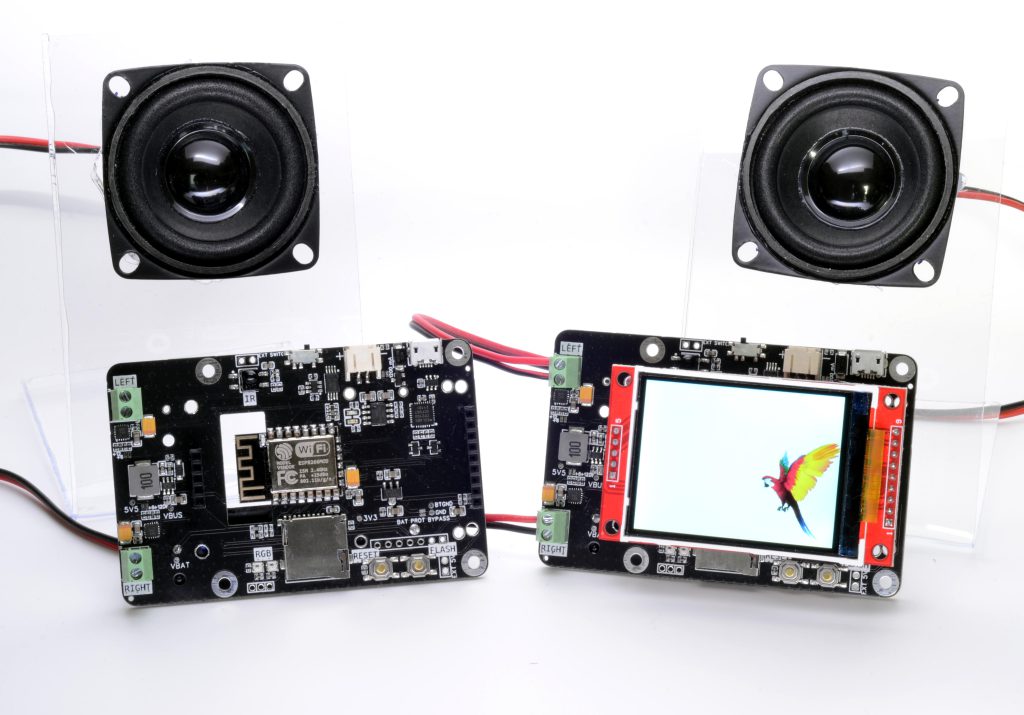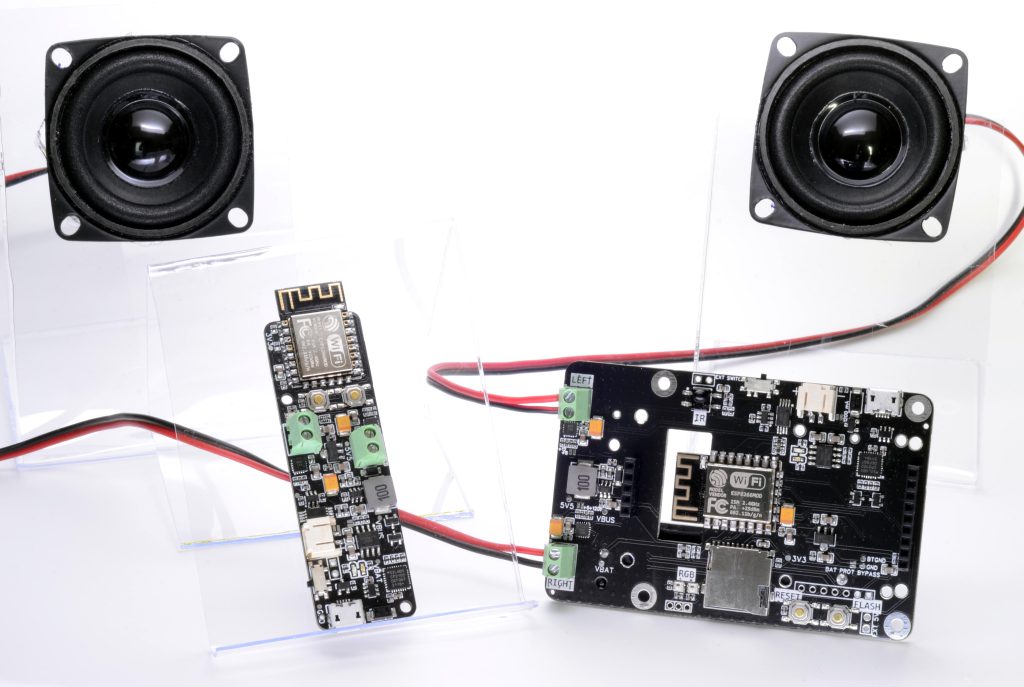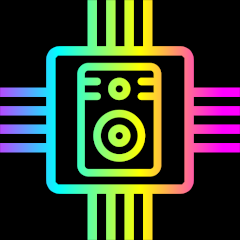
What is it?
ESP8266 Audio Development Board is a rich audio development platform based on the Espressif ESP8266 chip. It has a wealth of peripherals that open up a wide variety of user interaction. It is portable and has battery management on board. It is compact and can fit almost any enclosure. It is even wearable! Software samples allow for a quick start and easy adaptation of existing projects. ESP8266 Audio Development Board will be available in a full-featured TFT-screen version, and a portable mini version.
ESP8266 Audio Development Board is versatile and useful in a number of situations. It can be used as portable speakers with WiFi capability, as internet (WiFi) radio. It can even be used for talking gadgets and wirelessly connected audio based wearables.
Why ESP8266
Crowd Supply campaign for ESP32 version of the board is currently being prepared. If funded successfully it will be released in public as well.
ESP8266 Audio Development Board flavours

Mini board (on the left) is designed to be used in limited space enclosures and lacks some of the peripheral that would otherwise take too much space, most noticeably TFT screen. Full version of the board (on the right) features full specs and designed to shine. It is mechanically compatible with Raspberry PI 4 cases and can be places on the desktops or other places of choice.
Features & Specifications
MCU Core
- ESP8266 32-bit microprocessor running at 80 MHz
- 4 MB of flash storage
- CP2102 Serial communication / Flashing chip
Battery management
- Li-Ion battery charging with charge status indication
- Battery overcharge and overdischarge protection
- Battery overcurrent protection
- Onboard 14500 battery holder (except mini version), or 2-pin connector for external battery
- Battery voltage reading using built-in DAC
- Onboard power switch
Audio capabilities
- Dual I2S stereo DAC (Maxim Integrated MAX98537) with built in D-Class amp
- 3 W per channel on 4 Ohm load
- Up to 92% efficiency
- Onboard 5.5 V boost converter
Peripherals
- 2.4″, 320 x 240 px TFT Screen (except mini version)
- Wi-fi
- IR reader (except mini version)
- RGB LED, RGB LED strip header
- SDCard socket (except mini version)
Other
- RESET and GPIO0 (FLASH) buttons
- Raspberry Pi 4 case mechanical compatibility (except mini version)
- Software samples for every onboard peripheral
Firmware samples
Firmware samples includes usage of each of the onboard peripheral, including playing audio from FLASH, SPIFFS, SDCARD or Web stream, as well as some project adaptations not using audio, such at ThingPulse Weather station.
Documentation
Both software and hardware documentation can be found on project’s Github. You can follow project progress at Hackaday
Where to buy
You may support our work by ordering this product at Tindie
